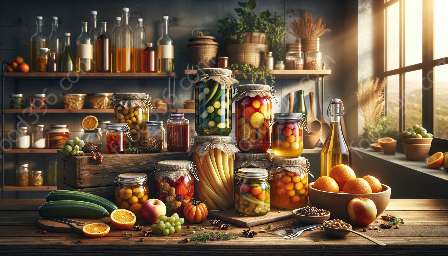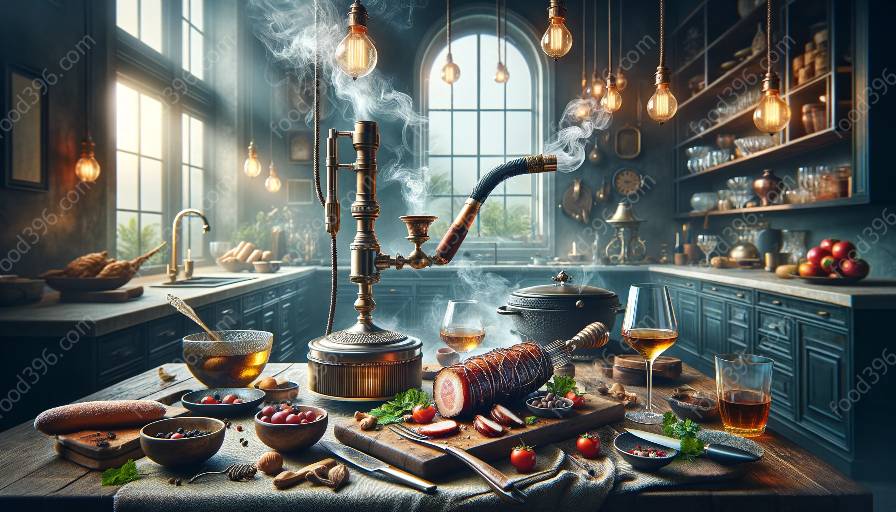When we think about smoking, the first thing that often comes to mind is the act of inhaling tobacco. However, smoking has a much broader and more diverse impact, especially in the realm of food and drink. From traditional barbecue techniques to infusing flavors into cocktails, smoking plays a vital role in both food preparation and culinary experiences. But beyond the culinary realm, the act of smoking also has far-reaching consequences, affecting both the environment and public health. This article aims to explore the fascinating world of smoking, discussing its impact on food and drink, its compatibility with food preparation techniques, and the risks associated with this practice.
The Art of Smoking for Food and Drink
Smoking has been used for centuries as a method of food preservation and flavor enhancement. In the context of food preparation techniques, smoking involves exposing food to smoke from burning or smoldering plant materials, such as wood. This process imparts a distinctive smoky flavor to the food, which can range from subtly sweet to intensely savory, depending on the type of wood and smoking technique used. The art of smoking has become synonymous with traditional barbecue culture, where various meats, such as brisket, ribs, and sausages, are slow-cooked over a smoky wood fire, resulting in tender, flavorful dishes that are loved by food enthusiasts around the world.
Moreover, smoking extends beyond the realm of savory dishes and meat products. Chefs and mixologists have embraced smoking as a way to elevate the flavors of cocktails and other beverages. Using specialized smoking guns or chambers, they infuse spirits, fruits, and even ice with delicate wisps of smoke, creating innovative and captivating concoctions that tantalize the palate. From smoky old-fashioned cocktails to smoked sea salt rimmed margaritas, the fusion of smoke and drink has opened up a whole new dimension of mixology, captivating the senses and pushing the boundaries of traditional beverage preparation.
Exploring the Science of Smoking
At its core, smoking involves the combustion or smoldering of organic material, releasing a complex mixture of compounds, including gases and microscopic particles, into the surrounding environment. When this process intersects with food and drink, it introduces a cascade of chemical reactions that contribute to the development of unique flavors and aromas. For example, wood smoke contains a plethora of volatile compounds, such as phenols, carbonyls, and organic acids, which interact with the surface of the food, penetrating and flavoring it in a nuanced and multi-layered manner.
The interaction between smoke and food is governed by the principles of diffusion, absorption, and adsorption, where the aromatic compounds in the smoke are drawn into the food matrix, altering its sensory profile. Furthermore, the type of wood used for smoking can significantly influence the final flavor outcome. Woods like hickory and mesquite impart robust, bold flavors, while fruitwoods, such as apple and cherry, lend a milder, fruitier essence to the food. Understanding the science behind smoking empowers chefs and enthusiasts to experiment with different woods and smoking techniques, giving rise to an endless array of unique and delectable smoked foods and drinks.
The Compatibility of Smoking with Food Preparation Techniques
From the perspective of food preparation techniques, smoking serves as a versatile and dynamic method that can be applied to various culinary processes. In addition to traditional barbecuing, smoking can be incorporated into techniques such as cold smoking, hot smoking, and smoke-roasting, each imparting distinct characteristics to the food. Cold smoking is utilized for preserving foods like salmon and cheese, infusing them with a delicate smoky essence without exposing them to high temperatures. On the other hand, hot smoking involves cooking foods directly in a warm, smoky environment, imparting both smoky flavor and cooking them simultaneously, making it ideal for items like ribs, poultry, and fish.
Moreover, the utilization of smoking in food preparation extends to innovative methods such as smoking salt, spices, and even desserts. The process of cold-smoking salt infuses it with a subtle smokiness, enhancing its versatility as a seasoning and finishing element. Similarly, the art of smoking desserts involves introducing smoke-infused elements such as chocolate, caramel, and fruits into sweet treats, unlocking a realm of delightful and unexpected flavors.
The Risks and Consequences of Smoking
While smoking adds depth and complexity to food and drink, it is imperative to acknowledge the potential risks and consequences associated with this practice. Beyond the culinary realm, smoking has a significant environmental impact, contributing to deforestation, carbon emissions, and air pollution. The deforestation of trees for obtaining wood for smoking and the carbon emissions from combustion pose severe threats to the global ecosystem, necessitating sustainable and responsible practices in the procurement and use of smoking woods.
Furthermore, smoking has been linked to adverse health effects, particularly in the context of tobacco smoking. The inhalation of tobacco smoke has been identified as a leading cause of preventable diseases, including lung cancer, cardiovascular ailments, and respiratory disorders. The pervasive nature of secondhand smoke further exacerbates the public health risks associated with smoking, prompting stringent regulations and public health campaigns aimed at curbing its impact.
When it comes to food and drink, while the risks are not as pronounced, it is essential for consumers to be mindful of the source and quality of smoked products. Unregulated smoking practices, especially in commercial food production, can lead to the accumulation of harmful substances, such as polycyclic aromatic hydrocarbons (PAHs), in smoked foods, posing potential health hazards. Thus, advocating for transparent and standardized smoking practices, coupled with informed consumer choices, plays a pivotal role in mitigating the risks associated with smoked foods and beverages.
Embracing the World of Smoking
Ultimately, smoking is an integral part of culinary culture, offering a myriad of opportunities for creativity, exploration, and flavor innovation. From the traditional craft of barbecue to the avant-garde realm of smoked cocktails, the art of smoking continues to fascinate and inspire food and drink enthusiasts worldwide. By understanding the science behind smoking, embracing its compatibility with food preparation techniques, and acknowledging the associated risks, we can foster an environment where smoking enriches our culinary experiences while upholding sustainable and health-conscious practices. As we delve deeper into the world of smoking, we uncover a tapestry of flavors, a celebration of tradition, and a commitment to responsible enjoyment, encapsulating the true essence of this timeless culinary art.





















